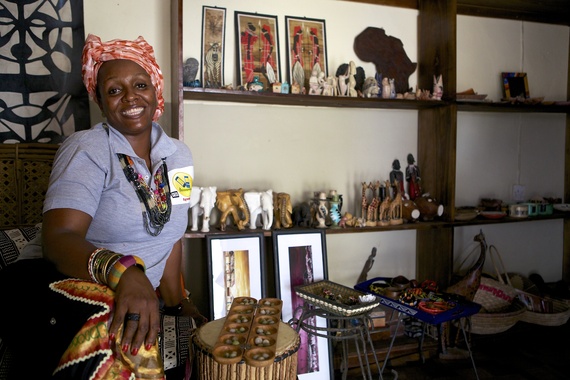Sunday, March 8th was International Women's Day, a day dedicated to recognizing and celebrating the achievements and contributions of women around the world.
The theme for this year's celebration was "Make It Happen." This begs the question: Make what happen? What is not happening that needs to happen? Who needs to be involved in making in happen? When will it happen?
I'm not sure of the answers to these questions, but one thing I know needs to happen, and happen now, is for us to make a concerted effort to bridge the gender gap.
According to the World Economic Forum Global Gender Gap Report 2014, the gap for economic participation and opportunity among women as compared to men now stands at 60%, having closed by 4% from 56% in 2006. Based on this trajectory, it will take 81 years for this gap to close completely, assuming nothing happens to slow the pace down in the meantime. Yes, you read that correctly: eight decades.
Make What Happen?
Communities thrive when there is equal participation from all members, regardless of gender. For women, many of whom are the primary caregivers and invest as much as 90% of their household income into their children's health, education and well-being, entrepreneurship offers a meaningful and flexible way to support their families.
A recent study by Michelle Budig of the University of Massachusetts, Amherst, noted that the earnings for American men increase by 6 percent when they become parents, whereas earnings for American women's decrease by 4 percent. It is safe to assume that this disparity exists to a more drastic degree in other countries.
"Fatherhood may serve as a signal to potential employers for greater maturity, commitment, or stability," Budig reports, whereas employers may "view family responsibilities among female employees as a source of instability." This perception has to change, and entrepreneurship can provide mothers who might otherwise be cast out of their traditional jobs with a way to avoid becoming another unfortunate statistic. This is not to say that the gender gap is irrelevant in the entrepreneurship space. It still exists, but the difference for female entrepreneurs is that they can ultimately determine how much they want to make.
Entrepreneurship drives economic growth and societal well-being. At Youth for Technology Foundation (YTF), we have been supporting women entrepreneurs for over 12 years through capacity building training. With support from partners including MasterCard, First Bank Nigeria, Visa and the Cherie Blair Foundation for Women, we have provided entrepreneurship and financial inclusion training to thousands of women entrepreneurs in the wholesale/retail, light manufacturing, social services and hospitality sectors.
What Is Not Happening That Needs to Happen?
It's not a problem of confidence. The women entrepreneurs we work with have plenty of confidence and want to achieve great things with their businesses. Among the women entrepreneurs who participate in YTF's programs, 53% say they want to grow their businesses by at least 75% per year after they receive the training, and 82% say they would encourage their daughters to follow their career path. Clearly, they have no regrets about becoming entrepreneurs. They may not be wealthy, but they are for the most part content and believe in the work they are doing.
Many of them, however, must try and grow their businesses without access to external financing. This does not necessarily mean that they cannot apply for financing or that their businesses are not strong enough to warrant it. It simply implies that the institutions on the supply side of the equation (commercial banks and micro-finance institutions) need to reflect deeply on the opportunity cost of not investing in women. Also, many women who might consider becoming entrepreneurs may be dissuaded because they do not see other women at the financing table. The sooner this problem is solved, the sooner the supply-side institutions can take advantage of the tremendous market opportunity these women entrepreneurs represent.
Who is Involved?
Men and women both have a role to play. In fact, men may have the bigger role because they are already at the table and have the power to save women a seat. By doing this, they are allies to the cause and are ensuring that conversation happens on a level playing field.
I remember spending time with one of the women entrepreneurs we work with in Nigeria, Joy, who has a business manufacturing cleaning products in Abia State, Nigeria. "My husband is so interested in reading the business tips I am receiving via SMS as a result of participation in this program," she said. "The first question he asks me after he comes in from work, 'Where is your phone?' and 'Let me read them.'" Among the women entrepreneurs trained in our last cohort, 55% said that they made the decisions in their businesses singlehandedly, while 54% indicated that they controlled the sources of income for their families.
When?
Yesterday. Training and business education for growth-oriented women entrepreneurs is a solution to closing the gender gap in employment, building more prosperous communities and enabling the growth and development of nations. These women entrepreneurs are role models for men and other women alike. Their creativity, determination and resilience have inspired many young women to follow their passion. They are already making it happen.
